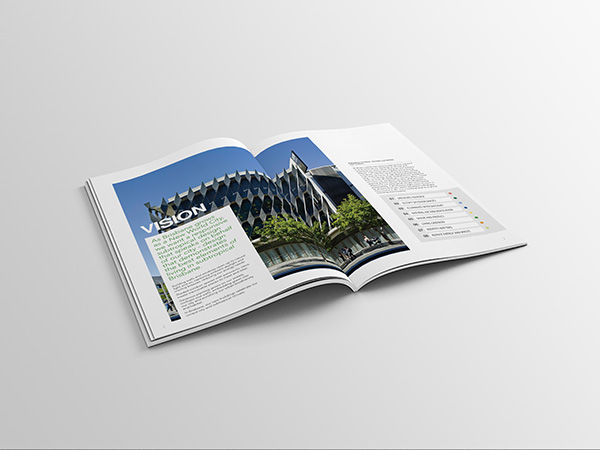The Buildings that Breathe Guide was launched in 2014 and since then has left an indelible mark on the skyline of Brisbane, shaping the future of the city with sustainable changes in our built environment.
Singapore is perhaps the most well-known city to lead in biophilic design, where modern architecture connects people to the environment using natural materials that draw in sunlight, air and greenery to improve mental and physical health.
To ensure the creation of a subtropical cityscape for large-scale building design in Brisbane, a multi-dimensional tool called Buildings that Breathe Guide was created to respond to our climate and establish a unique identity for the city.
Urbis Managing Partner James Tuma was an author of the Buildings that Breathe Guide; in collaboration with Brisbane City Council and Arkhefield, Urbis prepared the guide as an initiative of the 2014 City Centre Master Plan.

“The design guide illustrates how residential and commercial buildings in our city centre, mixed use inner-city precincts, transport corridors and principal regional activity centres should be designed to respond to our subtropical climate and improve sustainability.
“Brisbane City buildings now open up to natural light and air, capturing ambient daylight and cooling breezes, reducing our energy needs. Shaded outdoor spaces with panoramic views create memorable places to meet and relax. And generous planting on our streets, rooftops and walls with their embedded greenery enrich our urban biodiversity and habitat into our city.
“Queen’s Wharf Brisbane Integrated Resort, 360 Queen Street, 443 Queen Street, Maison at New Farm and dozen more all have an openness, permeability and a strong connection with the natural environment.
“They have a design that speaks on behalf of our city and celebrates our unique, subtropical climate, urban character and outdoor lifestyle,” Tuma said.
Eight elements were identified by Brisbane City Council as the key considerations to creating ‘Buildings that Breathe’ with these main characteristics being:
- Orientate yourself: clever building orientation saves energy, improves comfort and reduces operating costs
- Occupy outdoor spaces: our outdoor spaces are high performance infrastructure, providing amenity, recreation spaces and enhancing biodiversity
- Illuminate with daylight: maximising access to daylight enriches our lives and saves us money
- Natural air and ventilation: “with mechanical heating, ventilation and air conditioning systems accounting for between 30-40% of overall energy consumption in buildings, the provision of natural or hybrid ventilation systems could be the most important single step we could take in making tall buildings more sustainable.” Council on Tall Buildings and Urban Habitat (CTBUH) Natural Ventilation in High-Rise Office Buildings Technical Guide 2012
- Shade and protect: basic shading devices provided by the building regulate solar gain in our buildings without any user effort, reducing the demand on mechanical heating and cooling
- Living greenery: urban green space can reduce the heat island effect, improve the micro-climate, undertake localised air-cleansing, absorb pollutants, reduce noise levels and contribute to biodiversity
- Identity matters: responsible material selection protects the biodiversity of the environment, ensures the health
of occupants and minimises environmental impacts – it can even save you money - Reduce energy and waste: “achieving high environmental ratings reduces exposure to commercial risk and
asset obsolescence by ensuring that assets are ‘future-ready.’” John Dillon, Fund Manager, APPF Commercial –
joint owner of Commonwealth Bank Place
Driven by a commitment to sculpt better urban and community spaces, a revolutionary journey into City Greening has seen a profound shift in how Australian cities interact with urban landscapes and how they link to vibrant ecosystems.
Cities rich in greenery boast an increased presence of native flora, expansive parks, and broad access to verdant spaces for all residents and buildings can take advantage of the distinctive attributes of Brisbane’s unique lifestyle.
Urbis Design Director, Madonna Locke, another author on the guide, explains while Brian Donovon at BVN Donovon Hill termed the phrase “Buildings that Breathe”, the guide itself has been used by scores of architects and developers right across the city.
“We had a mantra during the workshop that the guide was not to be a detailed guidance, it wasn’t a rule book, it was about inspiring the most creative parts of the industry to respond and give them free reign to do that.
“The success in the guide has been creating a vision and seeding an idea.
“When someone’s project came to respond to the guide, or where everyone has the power to contribute to the new skyline of a subtropical, young, energetic city, Buildings that Breathe impowers all architects and developers to contribute and change the face of the city,” Locke said.
